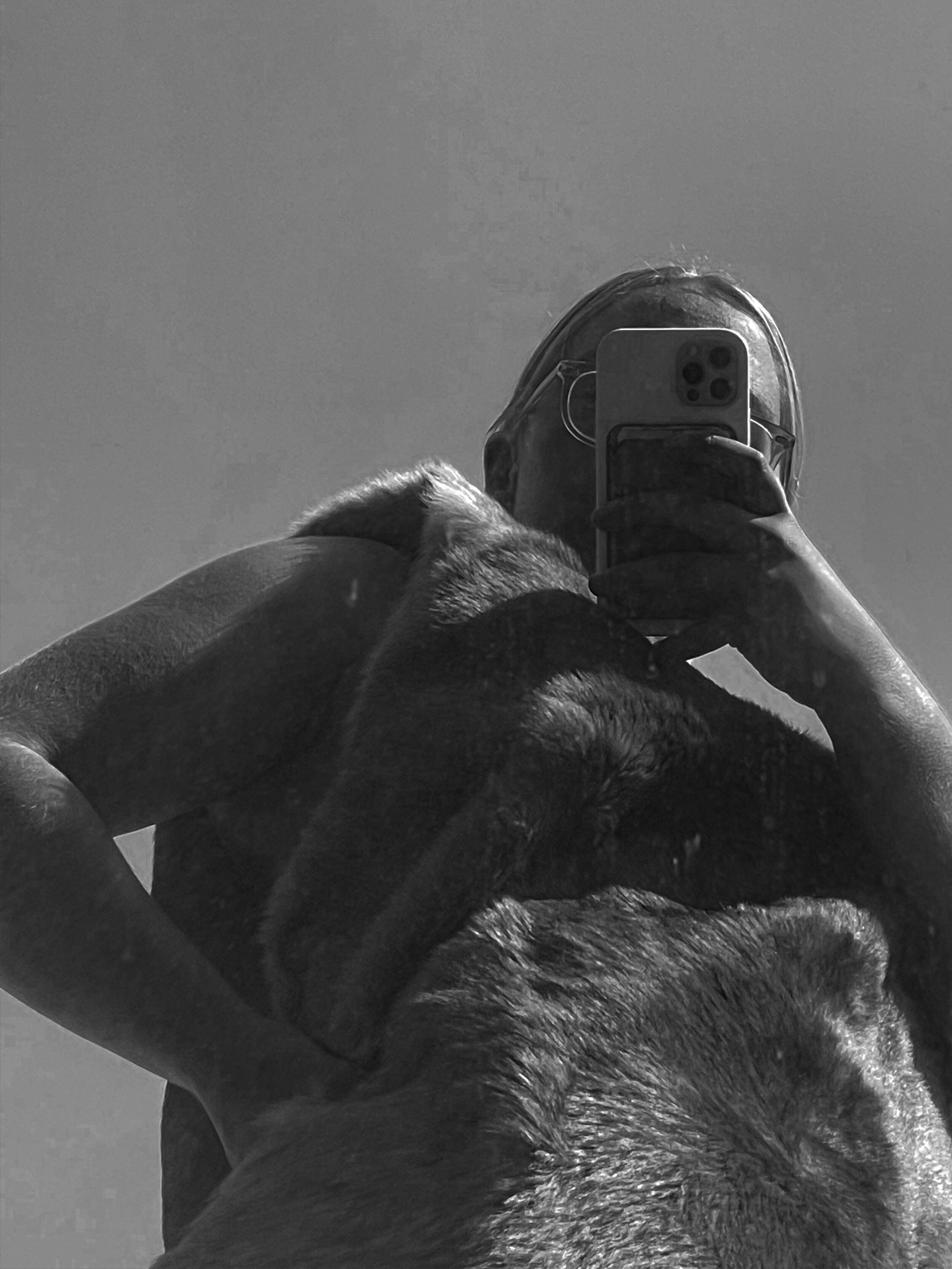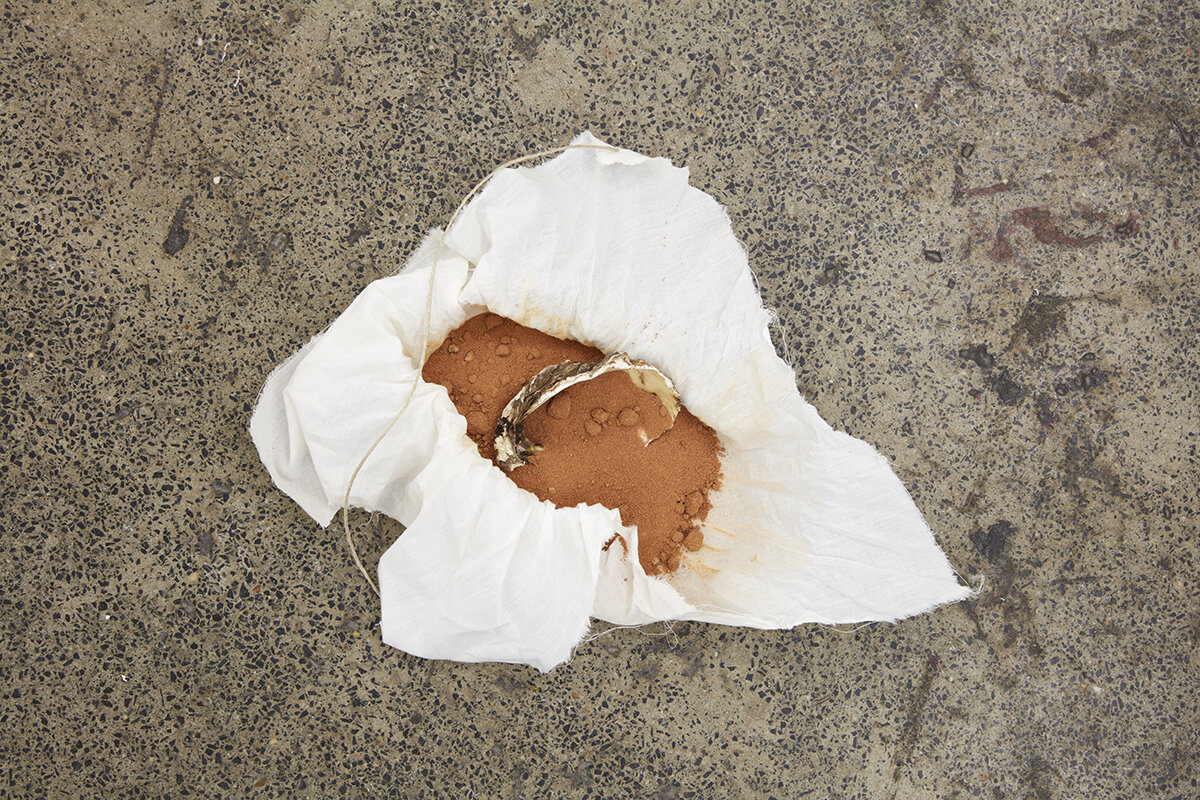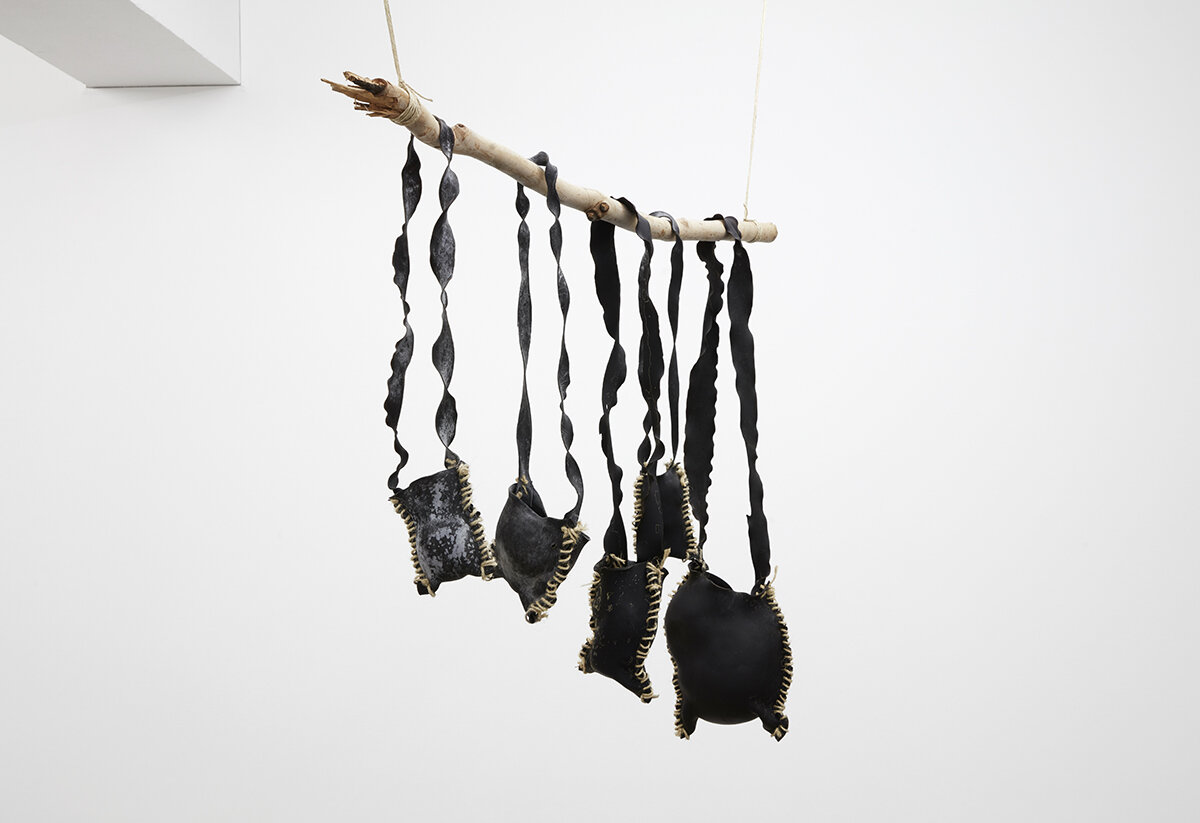Edwina Green on translating meaning
Edwina Green is a proud Trawlwoolway multidisciplinary artist, based in Narrm (Melbourne.) Her practice utilises painting, mixed media, video, sculpture, and cultural installation, in order to cross-examine the post-colonial paradigm and its effects on people and place. By prioritising First Nations narratives – former, contemporary, and emerging – Green initiates discourse that engages, provokes, and creates discomfort where necessary. Since completing a Bachelor of Fine Arts from the University of Melbourne in 2019, she has exhibited in an extensive range of exhibitions both locally and internationally, including NSFW: Not Safe For Work, 2019, curated by Ilie Lichtenstein, THE LAB, CollarWorks, New York; Yirramboi Festival, 2019; Brunswick Music Festival, 2020; and I'LL CARRY MY OWN WATER, 2020, SEVENTH gallery, Melbourne.
This conversation took place in May 2021 on the occasion of Edwina Green’s Firstdraft exhibition to make a basket.
Interview by Heather Tralaggan, Co-Director, Firstdraft, 2021–22.
“all of these [materials] fundamentally impact one another, when one is disrupted, the others are inherently disrupted.”
Edwina Green. Courtesy the artist.
Heather Tralaggan: When I walked into your exhibition I was immediately struck by the combination of smells, sounds and textures. Could you talk us through the elements that make up your exhibition to make a basket?
Edwina Green: We have bull kelp, kangaroo skin, Tasmanian oysters, ochre, disrupted ochre, ghost gum, natural fibre twine – all of these fundamentally impact one another, when one is disrupted, the others are inherently disrupted. These intimately selected elements create a kaleidoscope of narratives that feed off each other. It is important not to limit the sensory experience within this installation – for me, the most prominent smell arises when watching the video works, which is a memory of the scent present in those spaces, but for another person, it could be the ochre, or the washed cotton, or the bull kelp, or the oysters, or the kangaroo skin, or their own memory of scent?
Edwina Green, Po'akalar Newenna, 2019–21, ochre, natural twine, cotton rag, bull kelp, eucalyptus, burnt oyster shell, installation view (detail), Firstdraft, Sydney. Photo: Zan Wimberley. Courtesy the artist.
Edwina Green, Po'akalar Newenna, 2019–21, ochre, natural twine, cotton rag, bull kelp, eucalyptus, burnt oyster shell. Courtesy the artist.
“ I think when we think about language, as an English speaking nation, we always immediately want to know what the ‘translation’ is – instead of sitting with the sound of the word, or how we pronounce it in our head, and thinking about what it means.”
HT: Language is a central part of your practice. Could you tell us a little bit more about the titles of your work?
EG: It is, and it isn’t. I can’t tell you about the titles of my work, because I do not wish to share this knowledge with the public. I think when we think about language, as an English speaking nation, we always immediately want to know what the ‘translation’ is – instead of sitting with the sound of the word, or how we pronounce it in our head, and thinking about what it means. Knowing the translation immediately means that we lose the ability to connect, without whiteness. We want to immerse ourselves into something that doesn’t need to be indulged. It is ok to not know what a word means, it is ok to only know that it is a word, that isn’t English.
Edwina Green, Po'akalar Newenna, 2019–21, ochre, natural twine, cotton rag, bull kelp, eucalyptus, burnt oyster shell, installation view, Firstdraft, Sydney. Photo: Zan Wimberley. Courtesy the artist.
HT: to make a basket incorporates a variety of mediums. Do you find you start with the material or lead with an idea? Or do they happen in tandem?
EG: I am a big advocate for artists and creatives not being stuck in acquiescence. Acquiescence is to accept something, or tend to the needs/wants of others or what they expect from you, rather than allowing yourself to delve into a range of ideas, mediums, movements and concepts. I don’t think I could say that an idea comes, and then material, or a material comes and then an idea, or that they always happen together – I don’t have a formula of how to make work, but I know that I am dedicated to initiating discourse, however that may come.
Edwina Green, Po'akalar Newenna, 2019–21, ochre, natural twine, cotton rag, bull kelp, eucalyptus, burnt oyster shell, installation view (detail), Firstdraft, Sydney. Photo: Zan Wimberley. Courtesy the artist.
HT: You've been very busy lately exhibiting in a number of shows in 2020. Firstdraft is your first show in Sydney. As a Trawlwoolway woman working in Narrm, how does your work connect to audiences and community on Gadigal country that Firstdraft is located on?
EG: I spoke to my Worimi/Bundjalung sister, Phoebe, who came down from Newcastle to see the show. We had yarns about my work, and how when you live on the coast, you have that added understanding of each other through our food. A lot of our bush foods are pulled from the sea – the oysters, the muscles, the pigface. I recognise that I am a guest on Gadigal country, but I hope mob here can feel connected through this – regardless if their Country is here or not, but that they are living within salt water country. This is how I’d like to think my practice is connected to mob here.
Edwina Gree, Nokegerrer, 2021, Kangaroo skin 12–14 cm height, installation view, Firstdraft, Sydney. Photo: Zan Wimberley. Courtesy the artist.
“I don’t think I could say that an idea comes, and then material, or a material comes and then an idea, or that they always happen together – I don’t have a formula of how to make work, but I know that I am dedicated to initiating discourse, however that may come.”
Foreground to background: Edwina Green, Po'akalar Newenna, 2019–21, ochre, natural twine, cotton rag, bull kelp, eucalyptus, burnt oyster shell; SELAH, 2021, video, 8 minutes 45 seconds, installation view, Firstdraft, Sydney. Photo: Zan Wimberley. Courtesy the artist.
HT: You draw on the theory/practice of Indigenous futurism. How would you explain this concept to someone who is new to the idea and how does it inform your work and life?
EG: Indigenous futurism within a visual arts context looks like reimagining tradition, and ways of being, creating alternative futures and histories through dynamic discourse, action and moving throughout social creations of our identity. This, within my practice, means I am not limited in the way that I work with materials collected from Country, and I can make, or not make, whatever I feel. This idea allows me to not feel stagnant, or stuck, within a realm of what I feel like I ‘should’ be creating, or how I ‘should’ be looking or living, but I am a First Nations person, from a line of ancestors who were ever-adapting and interchanging based on our environment, and preparing for futures. It is our responsibility to be adaptable, as we have been, and this looks like however you want it to.
Edwina Gree, Nokegerrer, 2021, Kangaroo skin 12–14 cm height, installation view, Firstdraft, Sydney. Photo: Zan Wimberley. Courtesy the artist.
“A lot of our bush foods are pulled from the sea – the oysters, the muscles, the pigface. I recognise that I am a guest on Gadigal country, but I hope mob here can feel connected through this – regardless if their Country is here or not, but that they are living within salt water country.”
Edwina Green, Po'akalar Newenna, 2019–21, ochre, natural twine, cotton rag, bull kelp, eucalyptus, burnt oyster shell, installation view (detail), Firstdraft, Sydney. Photo: Zan Wimberley. Courtesy the artist.
HT: Why did you become an artist?
EG: My big sis Gal, and my bigger sis Nada, and my Dad. Major influences on me as an early teenager and encouraging me to engage with all the places that make up who I am, and to make.
“Indigenous futurism within a visual arts context looks like reimagining tradition, and ways of being, creating alternative futures and histories through dynamic discourse, action and moving throughout social creations of our identity.”
HT: Who or what are you listening to, watching, reading? How do you stay connected – or how do you disconnect – in these times?
EG: I’m listening to a lot of Isla Vista Worship, and Okay Kaya. I like to stay connected by yarning, and actively allocating time to spend with people who care for me, and keep me accountable, and also make me feel good. And also cooking and making good food. I don’t do well with disconnecting as such, but I do this by overloading my work, and burning myself out…
Edwina Green, Po'akalar Newenna, 2019–21, ochre, natural twine, cotton rag, bull kelp, eucalyptus, burnt oyster shell, installation view (detail), Firstdraft, Sydney. Photo: Zan Wimberley. Courtesy the artist.
Edwina Green, Po'akalar Newenna, 2019–21, ochre, natural twine, cotton rag, bull kelp, eucalyptus, burnt oyster shell, installation view (detail), Firstdraft, Sydney. Photo: Zan Wimberley. Courtesy the artist.
HT: How has the last 18 months been for you? How has your lifestyle and artmaking been affected by 2020?
EG: I made very little art in 2020 as I moved to Garramilla (Darwin) for 6 months for work, but also was able to develop my digital art skills – I’m very blessed to have a partner who is an incredible graphic designer, who has all the bits and pieces to be able to make digital art with ease, which meant I was able to accept a commission to design a basketball court for an upcoming building project, which will be completed in 2022, and a small piece for Veraison Magazine. But I would be lying if I said I didn’t feel grossly hopeless, and had multiple phone calls with my other art friends about how I wasn’t getting anywhere. I definitely have an anxiety around travelling interstate for anything, but especially for shows. So I am excited, and also scared, about interstate art displaying.
HT: Where to next? What projects and plans do you have for the immediate and longer future?
EG: I am super excited to be showing in Meanjin in July, at Outerspace, with some pretty big projects happening at Platform Arts in 2022. Longer future definitely looks like ‘buying’ property on Country, building a big, huge, beautiful house, where all mob can come and stay and connect whenever they want. With a gallery, studio, learning space – the whole lot – a space of safety.
Edwina Green, Mama never taught me, 2020, video, 3 minutes 10 seconds, installation view, Firstdraft, Sydney. Photo: Zan Wimberley. Courtesy the artist.
















The Firstdraft Census is Firstdraft’s annual stakeholder survey for 2024. Firstdraft is growing and we want to hear from you during this period of change.